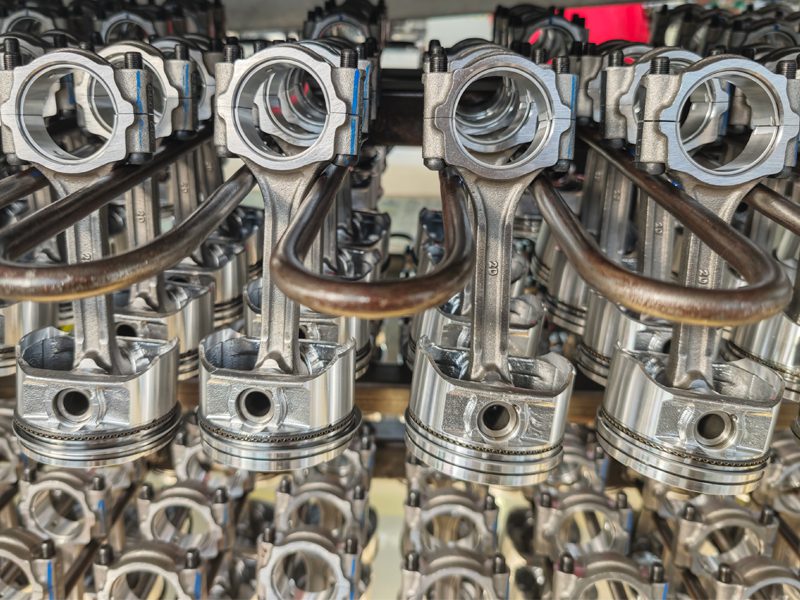Piston rings play a massive role in every engine, especially as they seal the combustion chamber and regulate oil consumption. If your car’s engine has been burning oil, losing power, or generally acting like it’s seen better days, bad piston rings could be the culprit.
Replacing them might seem daunting, but you can tackle it yourself with this guide we’ve prepared and the right tools. So, grab your wrenches, prepare to get your hands dirty, and let’s learn the steps on how to replace worn out piston rings.
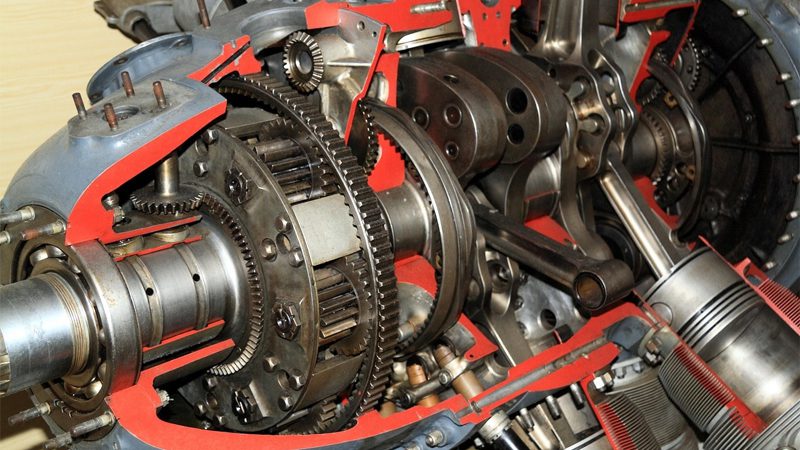
What Are Piston Rings, And Why Are They Important?
Piston rings actively seal the combustion chamber. They prevent the explosive gases generated during combustion from escaping past the piston and into the crankcase. They also regulate oil and prevent much oil from entering the combustion chamber.
It’s glaring that having bad piston rings in your engine directly affects performance, as they cause increased crankcase pressure, potentially causing increased oil leaks and indirectly weakening your oil pump.
Can You Replace Piston Rings Without Removing the Engine?
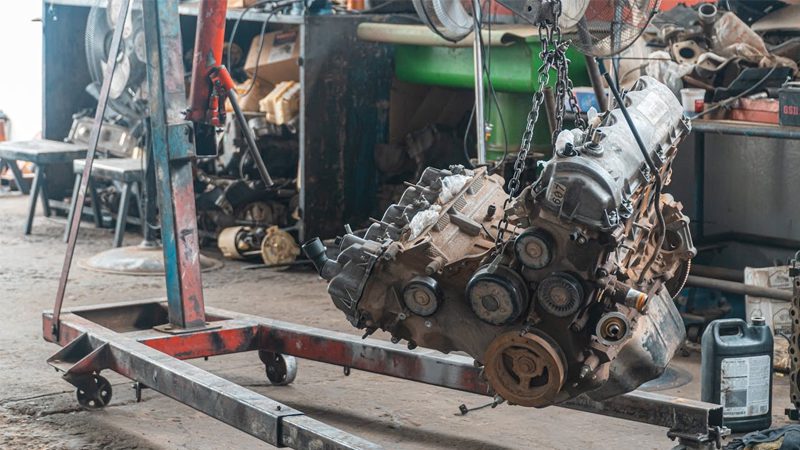
Replacing your old piston rings without bringing down the entire front engine block is feasible. You can do that on some older, simpler engines, like older Chevies with straight-six engines. You have to remove the cylinder head and oil pan to access the pistons from above and below.
However, working within the confined engine bay will be difficult. For modern vehicles, full engine removal is often required. This allows you to clean and inspect all internal components, minimizing the risk of future issues.
Tools and Materials Needed
Before you get your hands dirty, ensure you have the right tools. We listed them below.
- A torque wrench.
- A piston ring compressor.
- A feeler gauge.
- An engine hoist
Other tools: You’ll also need ring pliers and a cylinder hone to minimize the risk of damage during installation and for light deglazing of the cylinder walls.
After reassembly, materials like new gaskets (head gasket included), seals, engine oil, and a new oil filter are necessary for proper lubrication. Don’t forget cleaning supplies like solvents, rags, and brushes.
Step-by-Step Guide to Replacing Piston Rings.
Step 1: Preparation
One of the first things you should do is gather all the tools you’ll use and place them in a box where you can easily access them. After that, drain the engine oil completely and disconnect the spark plugs from the battery terminals.
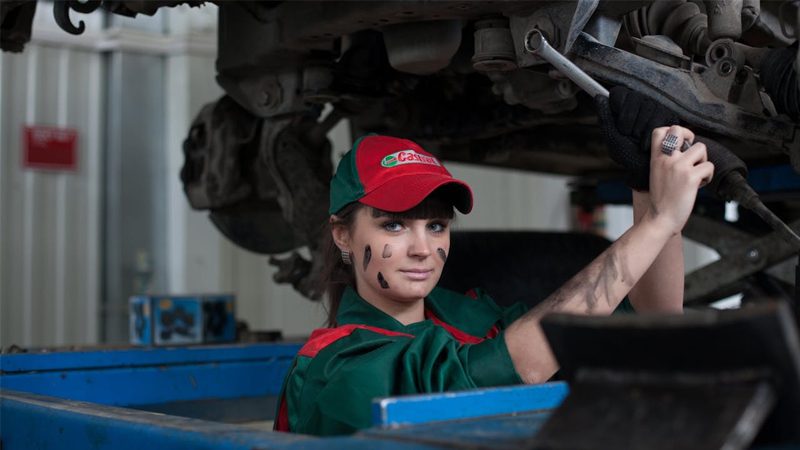
Step 2: Accessing the Pistons
Things get a little tougher, but you can handle them.
- Begin by connecting hoses, wiring, exhaust manifold, etc. Then, remove the cylinder head and the oil pan to expose the crankshaft and connecting rods.
- Carefully detach the connecting rod caps. Mark each cap and connecting rod with a corresponding number or letter to ensure they are reinstalled in their original positions. As you remove the connecting rod caps, quickly place them back onto their respective connecting rods to avoid mixing them up.
- Use labeled containers or a parts tray to keep track of bolts, nuts, and other small components. Also, take photos or videos of component locations to help you during reassembly.
- Place the removed parts in the order they were removed. If you are confident in remembering where things are, skip this step.
- Clean each component as you remove it to prevent debris from entering the engine when you reassemble it.
Step 3: Inspecting the Components
Once the pistons are accessible, thoroughly inspect the cylinder walls. You should expect a smooth, consistent surface. You may need to hone/bore the cylinders if you notice any damage.
Before you throw the old piston rings away, carefully examine them. Look for cracks, breaks, or a flattened/polished appearance. Measure the ring end gaps with a feeler gauge to determine if they exceed the engine’s specifications. This will give you an idea of what went wrong in it.
Look at the pistons and check for cracks around the ring grooves or piston skirts.
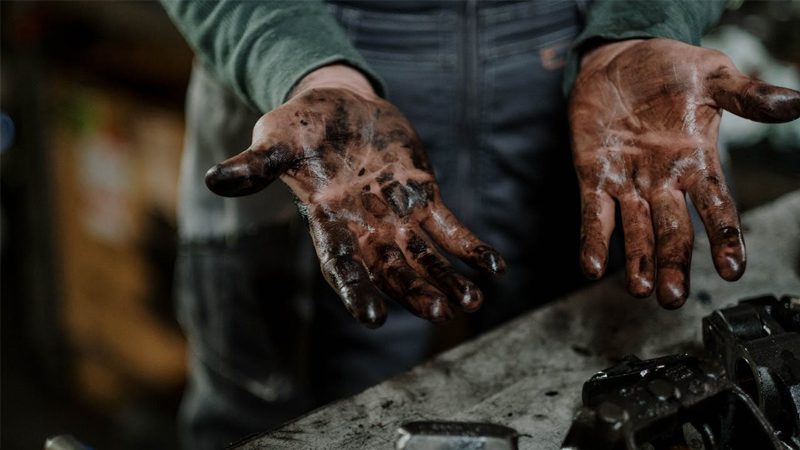
Step 4: Installing New Piston Rings
Before you install the new piston rings, use a suitable solvent and a soft cloth to remove all carbon deposits and debris from the piston crowns, skirts, and ring grooves.
Ensure you install the new piston rings according to the manufacturer’s specifications and orientation. The top compression ring, second compression ring, and oil control ring have distinct profiles and must be installed in their designated grooves.
Use a piston ring expander to spread the rings and slide them into place if need be.
Rotate the rings within their grooves to ensure they move freely. Double-check each ring’s orientation and gap placement and make any necessary adjustments.
Before you get lost, check out this video showcasing piston ring installation for reference:
Step 5: Reassembly
With the new piston rings installed, the next phase involves reinstalling the pistons in the engine. You should follow the steps below.
- Apply some engine oil to the cylinder walls and the new piston rings. Using a piston ring compressor, carefully compress the rings around the piston. This allows the piston to slide smoothly into the cylinder bore without damaging the rings or walls.
- Ensure the connecting rod bearings are properly lubricated and the connecting rod is correctly oriented.
- Gently tap the piston into the cylinder and reattach the connecting rod caps while using the torque wrench to torque it to the correct specification.
- You should also rotate the crankshaft to ensure the pistons move freely without binding. When you’ve done that, begin reassembling all engine components in the reverse order of disassembly. Ensure you follow the torque specifications for each part because improper tightening can damage things.
Step 6: Testing
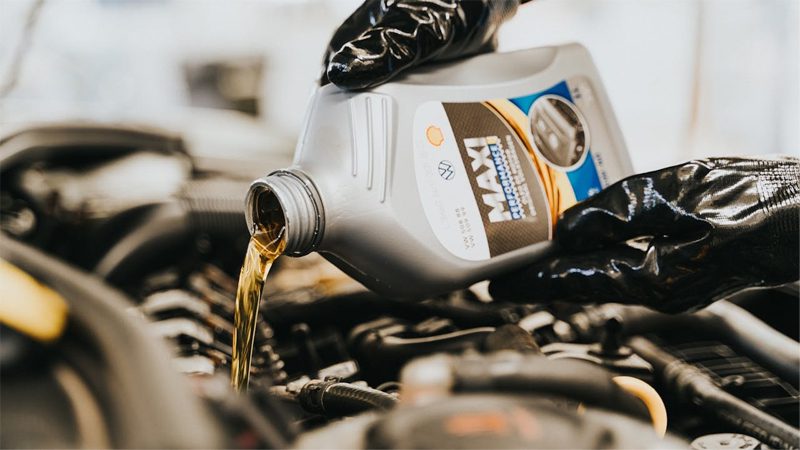
After reassembling the engine, pour in new oil and install a new oil filter. Wipe down the engine terminals and reconnect the battery, ensuring the terminals are clean and properly secured.
When all this is done, start the engine and listen carefully for unusual sounds, such as knocking, tapping, or hissing. Allow the engine to idle, and carefully inspect for oil or coolant leaks around the oil pan, cylinder head, or other connections.
Take note of your engine’s temperature and ensure it remains within the normal operating range. If it makes unusual noises or has any leaks, turn it off and investigate the cause.
Common Challenges and Troubleshooting Tips
No matter how careful you are, a few hiccups can occur here and there. Here are a few challenges you might encounter and what to do.
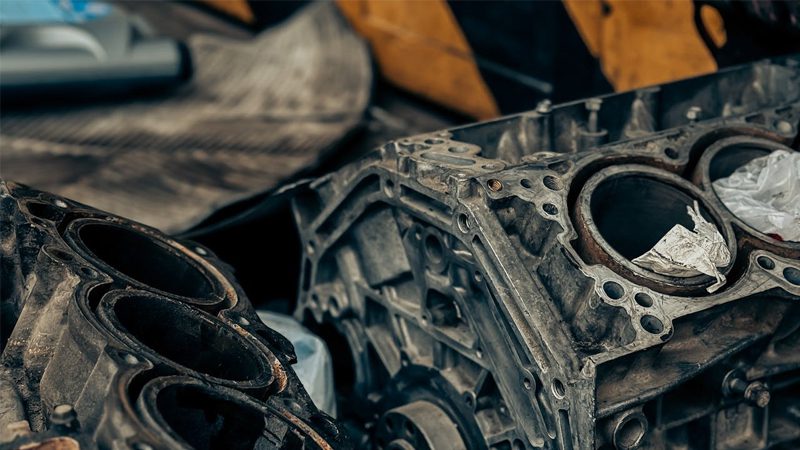
- If the rings are installed in the wrong grooves or with incorrect orientation, the engine will compress poorly and burn oil excessively. You need to adjust the rings again to ensure they’re properly aligned.
- Oil consumption issues can also occur after replacing piston rings. This happens for reasons such as incorrect ring installation or using the wrong type of oil. To resolve this, ensure you use the correct oil type and that the clearance between the piston rings and the cylinder wall is according to the manufacturer’s specifications.
- Low compression is another problem that may arise because of improper installation, defective rings, or contamination in the cylinder. A compression test will help identify the source of the issue, and you may need to remove the pistons and rings again for checks.
Cost to Replace Piston Rings
The cost of replacing piston rings can vary depending on whether you’re tackling it yourself or if you hire a professional. A DIY approach generally costs less but demands considerable time and mechanical skill.
The primary expenses for a DIY job include the cost of the piston ring set, new gaskets, engine oil, an oil filter, and any necessary tools you may need to purchase/rent. You may spend anywhere from a few hundred dollars to several hundred.
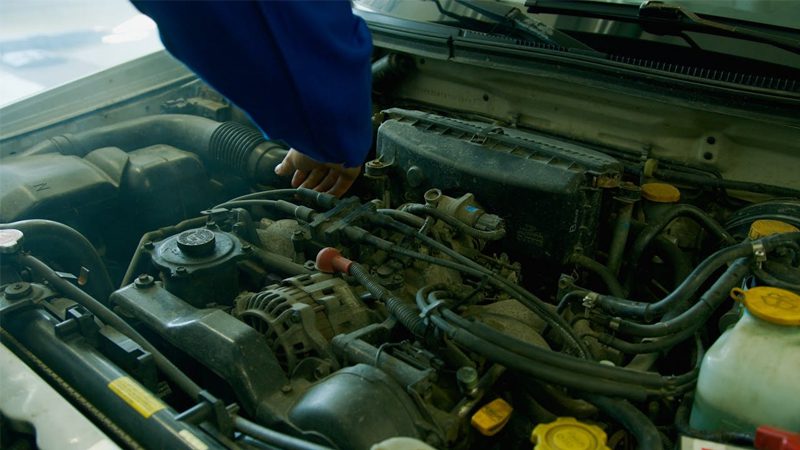
Opting for professional services will significantly increase costs due to labor charges. Professional mechanics may charge you per job or hour, and you’ll need to consider factors like
- Labor rates vary widely, from $75 to $150 per hour. Piston ring replacement is labor-intensive, often requiring 8 to 15 hours. Hence, you should expect to spend up to $2000 in labor costs.
- Parts: Some mechanics often mark up parts, so it’ll cost more if you don’t buy the replacement piston rings yourself.
- Machine Shop Costs: If the cylinders require honing or boring, machine shop services can add $200 to $500 or more to your bill.
Several factors come into play to influence the overall cost! They include engine type, vehicle make & model, the condition of the engine’s cylinder, and miscellaneous costs due to errors that occurred while you were changing the rings.
FAQs
What causes piston rings to fail?
Piston ring failure can be caused by
- Normal wear and tear
- insufficient lubrication
- excessive heat
- carbon buildup
- improper installation
- Cylinder wall damage
How do I know if my piston rings are bad?
- Excessive Oil Consumption: Worn piston rings allow oil to enter the combustion chamber, increasing oil usage. It could be a ring issue if you frequently topped off your oil levels, even without visible leaks.
- Blue or Grayish Exhaust Smoke: When oil burns in the combustion chamber, it produces distinctive blue or grayish smoke from the tailpipe. This excessive smoke is a sign your old piston rings are bad.
- Reduced Engine Power: You may experience things like sluggish acceleration, difficulty climbing hills, or an overall decrease in performance because of decreased compression.
- Engine Misfires or Rough Idle: Loss of compression can cause inconsistent combustion, leading to engine misfires or a rough idle. The engine may vibrate or shake noticeably.
- Compression Test Results: Low compression readings indicate a potential issue with the piston rings or other components like valves.
- Leak-Down Test: You can do a leak-down test to locate where compression is lost and distinguish between leaking valves and piston rings.
How long does it take to replace piston rings?
The time required to replace piston rings depends on factors like engine type, vehicle model, and skill level. A professional mechanic can replace your piston rings within 8 to 15 hours, while a DIY enthusiast should expect the process to take significantly longer. You should also consider factors like cylinder condition, which may necessitate honing or boring.
Can I drive with worn piston rings?
Your car may run, and you may even drive it without knowing that the piston rings are worn. But the signs will be there. We don’t recommend driving with worn piston rings. You can damage your engine further if you do so. Prolonged driving with worn rings can cause excessive wear, carbon buildup, cylinder wall damage, etc.
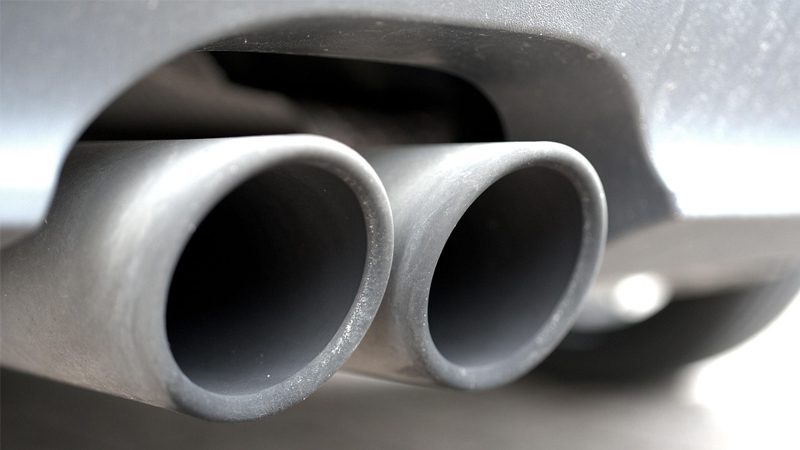
Conclusion
Replacing the faulty piston rings in your engine is one thing you can do to revitalize engine performance in your ailing engine. Properly functioning piston rings will help your engine run better and give you the performance it was designed for.
You can confidently tackle this challenging repair by following the steps we’ve outlined in this guide. Get a qualified mechanic to help you if you’re not confident in your ability.
The quality of your replacement parts is just as important as the installation itself. That’s why Nanjing Woda Auto Technology Co., Ltd. offers high-quality OEM piston rings and engine parts to ensure your engine runs smoothly.

